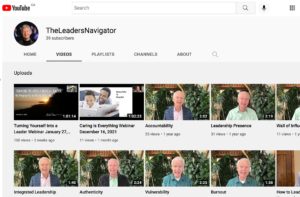Seven Ways To Enlarge The Lives Of Others – The Work Of The Best Leaders
“Believe in your heart of hearts that your fundamental purpose, your reason for being, is to enlarge the lives of others. As you enlarge the lives of others, your life will be enlarged. And all the other things we have been taught to concentrate on will take care of themselves.” – Pete Thigpen, Former President, Levi Strauss
Not long ago, I had the privilege of touring the plant of a client who hired me to help improve the culture of his organization. As we wandered around, the CEO introduced me to everyone we came across – in the halls, the offices, the labs, and on the shop floors. But he didn’t just know everyone’s name and title. He made a point, whenever possible and appropriate, of making a brief – and positive – comment about everyone. When he introduced me to the janitor, the caretaker’s eyes widened and brightened as the CEO told me how he puts pride into everything he does and that he’ll be greatly missed when he retires next month after more than a quarter century of service. Every employee smiled as they were introduced and the CEO said something positive about the unique contribution they individually made to the well-being of this company. This CEO understands a fundamental responsibility of leaders: to enlarge the lives of every one of their employees.
As I think of my own staff, I realize that I often take them for granted. I give them work to do, put pressure on them to deliver on their accountabilities, and attempt to give them support to do their work. But do I actually make a conscious effort to enlarge their lives? We all get into our routines, our habits, our mundane patterns. In a world of incessant demands, it is easy to lose touch with the people around us and the real work of leadership.
Here are seven ways to enlarge the lives of others:
- Care. Enlarging the lives of people isn’t a technique. You can’t fake it. People will see right through you. We all get busy and forget to notice people. Your staff will forgive you for forgetting. What they won’t forgive you for is not caring. Enlarging the lives of people involves caring about people, not manipulating them. People are uplifted and better by being around people who care about them.
- Serve. Serving means having a commitment to people’s growth as much as finding the resources to help them get their job done. Serving means making the success of others more important than your own. Serving means making others look good and being willing to not take the credit. Great leaders know that you can’t necessarily make people happy, but you can help them take pride in themselves and their work – by seeing their worth, beyond what they may see in themselves.
- Make Time. Enlarging the lives of others takes time. Take time to learn names. But more than that, take time to learn about what matters to people you serve, the names of their family members, and the kind of things they do when they are away from work. Leadership is more than just wandering around. It’s tuning in. It’s paying attention. It’s being in touch. Carry a notepad and make a note of what’s important to the people on your team.
- Challenge. If you are going to enlarge the lives of others you have to push them beyond their comfort zone. You have to set a standard that stretches them. And you have to encourage them. “You can do this;” “I trust you;” and “I believe in you;” are enlarging statements. Then model the way. When was the last time you encouraged someone to go beyond what’s easy? When is the last time you did something for the first time?
- Accountability. Collin Powell, the former US Secretary of State, once said that “everyone on a team knows who is and who is not performing and they are looking to you as the leader to see what you are going to do about it.” You don’t enlarge the lives of people when you let them off the hook or hold back from having the difficult conversations. Set clear standards and hold people accountable. It enlarges the lives of everyone.
- Safety. Enlargement is about creating an environment where people can grow. Bruce Lipton, a cellular biologist, says that a cell has only two options in life: to grow or to protect. If the cell perceives its environment to be toxic it will go into protection mode. When it perceives its environment to be nourishing, it will enlarge. To enlarge the lives of others, you must create an environment that is physically and psychologically safe – safe to work without harm, safe to make mistakes without fear, safe to be honest without retribution, safe to be yourself without judgment.
- Appreciation. Appreciation is about acknowledging (both privately and publicly) effective, productive action. Appreciation is recognizing people when they take special care in a delivery, when they go out of their way to fix a glitch in a product, when they make a customer feel extra special, when they send the order out early, when they go the extra mile. Appreciation isn’t empty praise. Appreciation is genuine recognition when someone makes a difference. It’s about catching people doing things right rather than succumbing to the seemingly natural tendency to criticize. Say thank you. What you appreciate, appreciates.
When you are mindful and intentional about making these actions a habit, the lives of people around you will naturally enlarge. As you help people grow in this way, it will inevitably come back to you in the form of commitment, loyalty, and results. As you enlarge the lives of others, your life and your organization will be enlarged. And all the other things we have been taught to concentrate on really do seem to take care of themselves.


